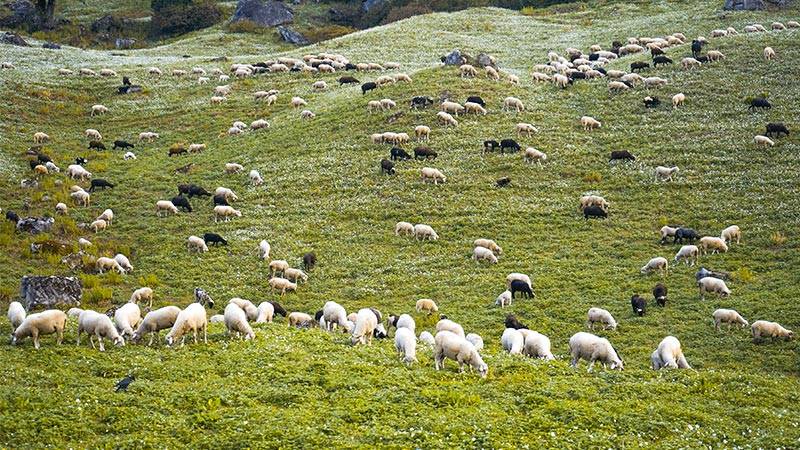For the past two years, the Bay Area Rapid Transit’s (BART) property has been diligently manicured by a team of unexpected landscapers – goats. These goats have munched away at the dried grasses surrounding BART properties, curbing fire hazards in a sustainable fashion. Not only are they functional, but they’ve also charmed the public, inspiring BART to unveil a horned anime mascot modeled after these goats.
But this year marks a transition. The goats are taking a break, and in their stead, BART has enlisted the help of a new, photogenic nibbler: self-shearing sheep.
The rationale behind the swap lies in the dietary preferences of these animals, which both belong to the Caprinae subfamily. While goats are more inclined to consume taller, woody plants, sheep have a penchant for grasses and short roughage. According to Mike Canaday, owner of Coalinga-based Living Systems Land Management—the company that contracts these four-legged fire mitigators to BART—it is beneficial to rotate the animals every few years.BART’s foray into employing animals for fire hazard mitigation has evolved over time. Before these furry workers took over, the job of removing dried grasses was undertaken by loud and sometimes disruptive heavy machinery. Josh Soltero, a Fence and Irrigation Technician at BART who is a part of the grazing project, noted that these machines carried the risk of starting fires themselves. In contrast, the grazing animals are more adaptable, quieter, less polluting, and have proven to be cost-effective, possibly slashing fire mitigation expenses in half, according to Soltero.
This year, BART’s grazing team has expanded substantially. What started as a modest herd of 100 goats has grown into a battalion of approximately 500 sheep.
The grazing animals not only reach areas that humans cannot easily access, but they don’t make noise (besides the occasional bleat or “bah”), and they emit far less pollutants than gasoline-powered equipment. Not to mention, their efficiency “probably cuts the cost of fire mitigation in half,” said Soltero.
The herding team, led by shepherd Hector Quispealaya Ricse—a native of Huancayo, a city in central Peru—is a critical part of this unconventional project. Ricse, whose role is essential in moving the sheep across various terrains, is also a living testament to the project’s global reach. Having learned sheep rearing from his family in Peru, he took the job to support his family back home. His two daughters, one studying to become a pharmacist and the other an obstetrician, are his primary motivation for his work.
In a year when the Bay Area saw higher than usual rainfall, fresh green vegetation was a welcome sight. But as Soltero highlights, this greenery is deceptive; it dries out under the summer sun, adding to the fire fuel load. BART has been vigilant in monitoring the vegetation around its properties, prioritizing areas with the highest fire risk for grazing.
According to BART, the herd’s current itinerary began near the Berryessa/North San Jose Station, forming a U-shaped path expected to culminate at Pittsburg/Bay Point.
Soon, these woolly workers will wrap up their Bay Area stint for the year and journey back to their home in Fresno County. Soltero is already looking forward to their return, indicating not just the success but the connection and warmth these animals have brought to a critical, and potentially dangerous, part of maintaining the Bay Area’s landscape.
“I always can’t wait for next year when they come back,” Soltero said, capturing the broader sentiment towards these charming and environmentally friendly fire-preventing grazers.
More inspiring green news similar to this:


